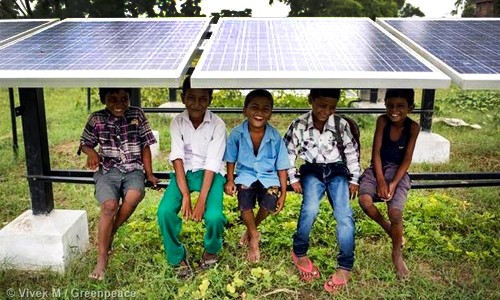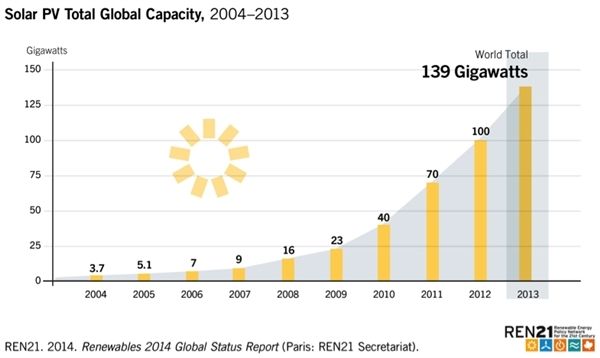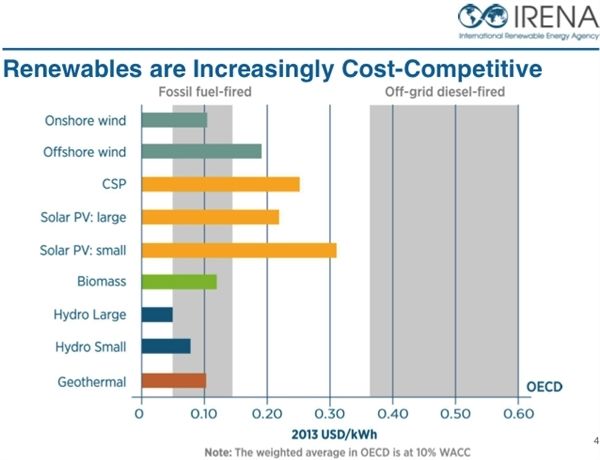

As the world’s leading climate scientists finalize the latest and most comprehensive report on climate change and ways to tackle it, a key question is: What is new? What has changed since the release of the UN climate panel’s last Assessment Report (AR4) in 2007?
On the “solutions” side, the answer is pretty straightforward:
Nuclear power hasn’t changed much. IPCC notes that nuclear capacity is declining globally and that, from safety to financial viability, nuclear power faces many barriers. “Carbon capture and storage” (CCS) isn’t really breaking the mold either. Although the IPCC identifies a need and potential for future CCS-aided emission reductions, in reality, CCS isn’t delivering and, since 2007, “studies have underscored a growing number of practical challenges to commercial investment in CCS.”
The big news is the breakthrough in new renewable energy.
In just a few years, solar and wind technologies have grown so competitive and widespread that they are gradually reshaping common perceptions of climate change mitigation. “Saving the climate is too difficult and too costly” is becoming “We can do this!” Even in purely economic terms, renewable energy (RE) is set to gradually outcompete fossil fuels. According to the IPCC:
“Since AR4, many RE technologies have demonstrated substantial performance improvements and cost reductions, and a growing number of RE technologies have achieved a level of maturity to enable deployment at significant scale (robust evidence, high agreement).”
So, what does the mean in practice? Here are 10 quick facts:
1. There’s now 15 times more solar power and three times more wind power in the world than in 2007.


2. The costs of solar and wind have declined profoundly. Renewables are increasingly the cheapest source of new electricity.
According to the IRENA, the price of onshore wind electricity has fallen 18 percent since 2009, with turbine costs falling nearly 30 percent since 2008, making it the cheapest source of new electricity in a wide and growing range of markets.
In places as diverse as Australia, Brazil, Mexico, South Africa, Turkey, India and throughout the U.S., the cost of electricity production from onshore wind power now is on par with, or lower than, fossil fuels.

For solar, the speed of cost decline has been even more dramatic. Solar photovoltaic (PV) prices have fallen by 80 percent since 2008 (!) and are expected to keep dropping. Solar can now increasingly compete with conventional energy without subsidies.

 233k
233k  41k
41k  Subscribe
Subscribe 